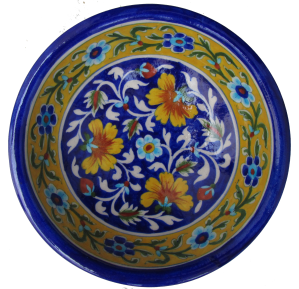
With a myriad of fascinating shawls and wrappers that belong to different Naga groups, one of the most alluring mantles is adorned by the Chakhesangs. Popularly referred to as the ‘Elephant cloth’ (a name obtained because of the prominent elephants in the central field), was the privilege of only the wealthy members of the group. The vividly embroidered animals and birds that dominate this grayish-black textile immediately stand out from the rest of the textiles from this region, posing hundreds of questions about its origin and inspiration.
Weaving textiles is only done by women throughout the extensive Naga community, mostly using a back-strap or loin loom. It is considered a taboo to even touch the weaving implements by men. The only exception to this is the tüsngkotepsü, the warrior shawl of the Aos, where the central white band is painted by men. Both cotton and wild nettle are spun into yarns for various textiles and dyed with natural vegetable dyes. Although, bazaar dyes became popular from the 1920’s[i] because they offered several colour choices and in brighter shades. Embroidery is very rare in this region and earlier reference to embroidery by scholars on the subject, was basically describing the motifs achieved by supplementary wefts and not actual needle-work. Today, in various government run emporiums, there are examples of tüsngkotepsü, the Ao mantle, with the central band having embroidery either by hand or machine which is a recent innovation. Therefore, the embroidery in the ‘elephant cloth’ is a surprising exception and considered by many as not an indigenous technique of the region. Scholar, Marion Wettstein, writes that she was reported during her research that the earliest examples of this mantle were received as gifts from the Meitei rulers of Manipur.[ii] This explains the presence of embroidered elephants and horses, the royal animals of the Meitei rulers. The mantle was later adopted by the Chakhesangs and on its entirety together with the technique is now claimed indigenous to the group.[iii]
The Chakhesangs, formerly known as Eastern Angami, is an amalgamation of three groups, Chokri, Kheza and Sangtam, represented respectively in the three syllables ‘cha-khe-sang’. The group occupies a large geographical area not only in present day Nagaland but also neighbouring Manipur, which makes many other tribes and villages fall under the umbrella of Chakhesang. Therefore, due to the complex and multi-cultural nature of the group, there are several names for the same mantle. Hapidasa, chi-pi-kwhu/chipikwü, shaphi lanphi or khape kade sa are various names for the same mantle. The Maos, another Naga group also wears a variation of the mantle.
The back-strap loom allows only a limited width, due to which three or two lengths have to be joint together to achieve the desired size. Over the surface, embroidery is done employing a flat stitch or Romanian stitch using red, green, yellow and white cotton or wool/acrylic threads. The embroidered motifs depicts horses for speed, elephants for strength, bison or buffalo for bravery, peacocks for beauty and constellations for the height of the sky.[iv] The production of this mantle has a deep connection with the tradition of ‘Feast of Merit’. In order establish oneself in the society, a member had to arrange three feasts at different stages for the benefit of the entire village. On the successful completion of each feast, the benefactor was accorded with ranks and honour, including the right to wear certain designated textile and adornment. The ‘elephant cloth’ is one such textile. Among the Chakhesangs, the privilege of wearing a shawl with chipikwü designs was awarded to only those who had given these three Feasts of Merit.[v] The mantle had to be embroidered during the course of the feast, wherein few women would join in to complete the task before dusk. Motifs accumulated with successive feasts and the offerings made in them.

[i] Julian Jacobs, The Nagas: Hill Peoples of Northeast India, Society, Culture and the Colonial Encounter. (London: Thames and Hudson Ltd., 1990), 44.
[ii] Marion Wettstein, Naga Textiles: Design, Technique, Meaning and Effect of a Local Craft Tradition in Northeast India. (Vienna: Arnoldsche Art Publishers, 2014), 106.
[iii] Aglaja Stirn and Peter van Ham, The Hidden World of the Naga: Living Traditions in the Northeast India and Burma. (New Delhi: Timeless Books, 2003), 159.
[iv] Akha Kaihrii Mao, “Meaning and Significance of the Traditional Moa-Naga Shawls,” in Objects: Identities: Meaning, Insider Perspectives from North East India, eds, Dharitri Narzary Chakravartty and Surajit Sarkar, (New Delhi: Ambedkar University, 2015), 68-72.
[v] Lotika Varadarajan, “Fabric and Tradition: Textiles of the Northeast”, Marg, A Magazine of the Arts, Volume 62, Number I, September 2010.
Other references:
Peter van Ham and Jamie Saul, Expedition Naga: Diaries from the Hills in Northeast India, 1921-1937, 2002-2006, New Delhi: Timeless Books, 2008.
tetsiosisters.blogspot.in/2011/12/chi-pi-kwhu-shawl-of-highest-honour-html

Great going Sushmit!!
LikeLike